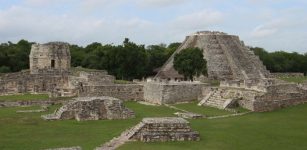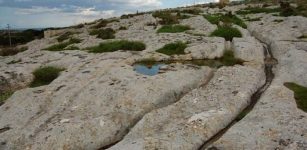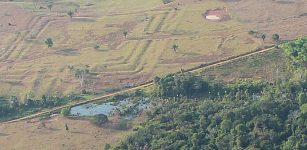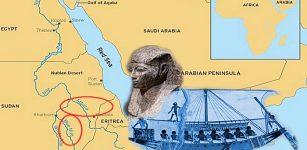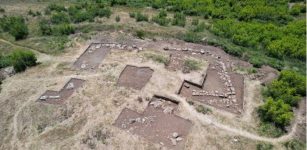Peaches Spread Across North America Through The Resourceful Networks Of Indigenous Communities
Jan Bartek - AncientPages.com - It's remarkable how peaches spread across North America through the resourceful networks of Indigenous communities. Their deep understanding of the land and dedication to sharing resources played a pivotal role in introducing this delightful fruit across vast regions.
According to a study led by a researcher at Penn State, while Spanish explorers may have introduced the first peach pits to North America, it was Indigenous communities that significantly contributed to the widespread cultivation of this summer fruit. The research highlights that Indigenous political and social networks, along with their land use practices, were crucial in the adoption and distribution of peaches across the continent.
"Peaches need a lot of care by people to be productive. They need to be planted in appropriate places with a lot of sunlight and the right soil drainage, and they need to be pruned," said Jacob Holland-Lulewicz, first author and assistant professor of anthropology at Penn State.
"For a long time, the narrative was that the Spanish introduced peaches and then peaches spread very quickly. The reality is way more complicated. How quickly peaches spread is very much a product of Indigenous networks and land management."
Spatial distribution of AMS, archaeological, and ethnohistoric data. Credit: Nature Communications (2024). DOI: 10.1038/s41467-024-52597-8
The researchers conducted an analysis of historical documents referencing peaches, including the travel writings of French missionary explorer Jacques Marquette and English merchant Jonathan Dickinson. To estimate the ages of peach pits and other organic samples, such as carbonized tree wood, they utilized radiocarbon dating. This method measures the decay of radioactive carbon-14 atoms in organic material.
The study encompassed 28 archaeological sites and two regional locales where preserved peach pits had been previously recovered by archaeologists. These sites were situated across the Carolinas, Georgia, Florida, Alabama, Tennessee, and Arkansas.
Research indicates that peaches were likely prevalent across Indigenous settlements in the interior southeast by around 1620, approximately a century after the initial Spanish expeditions in Florida and Georgia's Oconee Valley.
This timeline suggests that early Spanish settlements, which became significant trade hubs within existing Indigenous networks, facilitated the spread of peaches, as noted by Holland-Lulewicz.
"Many narratives talk about the Spanish, or Europeans generally, arriving and then you see instantaneous changes to Indigenous histories and the spread of materials, but those initial interactions didn't cause major changes," he said. "It's not until Spanish networks and Indigenous networks become entangled 100 years later that we have the necessary conditions for the spread of peaches."
The team has identified what may be the earliest evidence of peaches in North America at a Muskogean farmstead situated in the Oconee Valley. In the 1990s, archaeologist James Hatch from Penn State unearthed peach pits at the base of post holes that once supported structures within the farmstead's house.
Bayesian chronological model. Credit: Nature Communications (2024). DOI: 10.1038/s41467-024-52597-8
Through radiocarbon dating of charcoal, nuts, and corn kernels extracted from these post holes, researchers have ascertained that occupation of this site commenced between 1520 and 1550 and concluded between 1530 and 1570. This chronology suggests that peaches might have reached the interior southeast several decades prior to the establishment of St. Augustine in 1565.
"Understanding the path that the introduction of species, such as peach trees, took through colonization and the role that Indigenous people and their long-term relationship with the environment played in shaping these histories demonstrates the importance of these events, people and processes to what becomes a broader American history," said co-author Victor Thompson, Distinguished Research Professor of archaeology at the University of Georgia (UGA) and executive director of the Georgia Museum of Natural History.
"Further, the fact that all of this work took place on museum specimens underscores the importance of maintaining these collections for future study."
Indigenous peoples not only adopted the peach but selectively bred new varieties outnumbering the varieties found in Europe even at this early time, Holland-Lulewicz said.
"When Europeans started to move through and into the interior of the continent in the mid- to late 1600s, they noted that there were way more varieties of peaches being grown by Indigenous peoples than there were in Europe," he said, explaining that the fruit had become an important aspect of Indigenous culture.
"At this time, Europeans are noting really dense peach orchards around Indigenous towns, but some of these towns and people had never previously interacted with or even heard of Europeans. In fact, there are records of Indigenous peoples describing peaches as an Indigenous fruit."
The fruit had become so integral to Indigenous history and culture that when the ancestors of the modern-day Muscogee (Creek) Nation were forcibly removed from Georgia and Alabama during the 1800s, they took peaches with them.
See also: More Archaeology News
"There are Muscogee (Creek) peoples today who grow peaches as heritage crops," Holland-Lulewicz said. "The act of growing and caring for those peaches is an important cultural practice. These were the first peaches introduced in the 1500s and 1600s that were then carried halfway across the continent and continue to be grown today."
The study was published in the journal Nature Communications
Written by Jan Bartek - AncientPages.com Staff Writer











